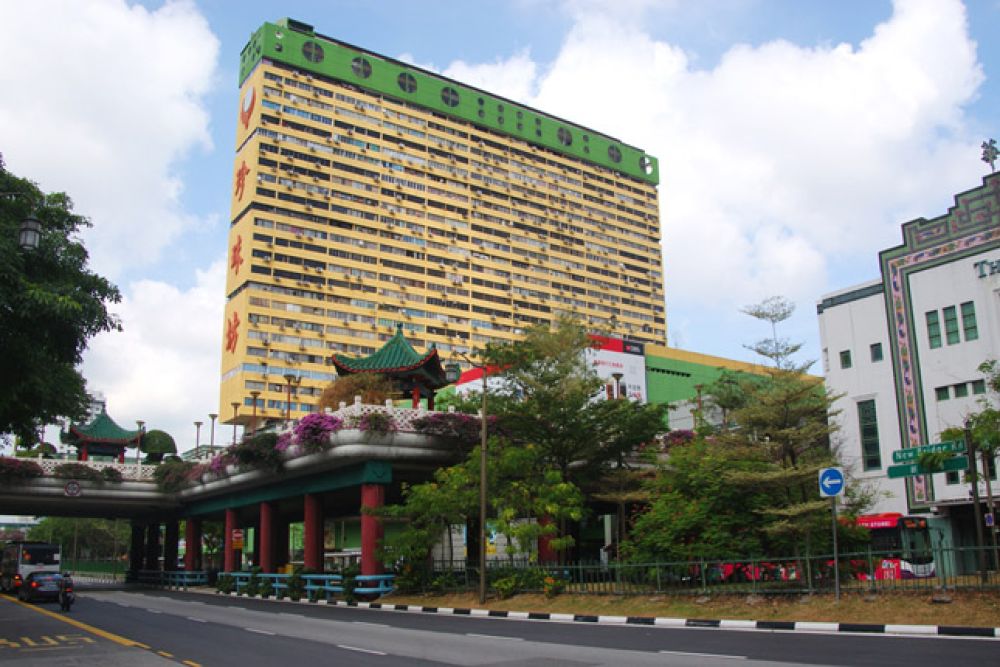

People's Park Complex and People's Park Centre are two distinctive landmarks located in the cultural enclave of Chinatown in Singapore. These are not only commercial complexes but also reflect the architectural transformation that Singapore underwent in the late 20th century.
Constructed in 1973, the People's Park Complex stands as an early example of a mixed-use development in Asia. It is noted for its vibrant green color and Brutalist architecture, a style quite popular at the time of its construction. The complex combined residential units with commercial spaces, setting a new standard for urban living. Initially set-up as an open-air retail location in the 1960s, it has now evolved into a hub for those looking to find a variety of goods, from electronics to textiles and travel services, especially catering to the Chinese community.
Opened in 1970, People's Park Centre was among the first shopping malls in Singapore and also served as a precursor to modern mixed-use developments. It was once a bustling retail center and remains a place where lawyers' offices, tailoring shops, and traditional Chinese medicine halls coexist, offering insights into Singapore’s commercial development. It is often visited by locals and tourists looking to experience a slice of everyday life in Singapore.
Since its founding as a modern state in 1819, Singapore has evolved from a humble trading post to a thriving global hub of culture, commerce, and tourism. The history of tourism in Singapore can be traced back to the early 20th century when it was marketed as a stopover point for luxury cruises and the "Crossroads of the East".
After independence in 1965, Singapore rapidly expanded its amenities to attract international visitors. The development of iconic hotels, the establishment of Singapore Airlines, and the launch of festivals like the Singapore Food Festival played pivotal roles in the growth of tourism.
In recent years, the city-state has witnessed groundbreaking transformations – from the rejuvenation of the Marina Bay area, featuring the Marine Bay Sands integrated resort, to the development of the Gardens by the Bay. Singapore's tourism strategy has often revolved around positioning itself as a top destination for both leisure and business.
As a destination always looking forward, Singapore has embraced several latest tourism trends. Sustainable tourism practices are increasingly prominent, with hotels and attractions going green in operations. A rise in experiential travel pushes visitors towards authentic cultural experiences, like heritage walks in neighborhoods including Chinatown.
Moreover, innovation is at the heart of Singapore tourism, as seen with developments in virtual and augmented reality (VR/AR) experiences. Smart tourism initiatives incorporating apps and digital platforms enhance the visitor experience, making exploration and discovery seamless for travelers.
Despite the challenges posed by global events such as the COVID-19 pandemic, Singapore continues to adapt. It is reopening its borders and is keen on maintaining its reputation as a safe and exciting global city that’s rich in contrast and color.